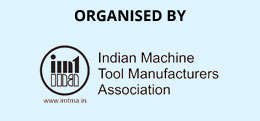Approach to Improving Productivity in Metal Working
Manufacturing companies all over the world are continuously attacking waste in their process and improving productivity. The approach taken by these companies can be broadly categorized under these broad headings. Pros and cons wherever appropriate of each approach is discussed in brief.
Optimising Metal Working Process
Combination tooling: This is a favourite approach of many companies in large volume production. Combination tools certainly lead to cycle time reduction on VMCs and HMCs. There are a few problems that arise. Cutting speed is compromised to increase the tool life of that tool which has the shortest tool life. All tools do not wear the same amount at the same time. This is an issue especially in solid carbide tools while resharpening. Chips from one tool can clog into an adjoining tool. Since cutting parameters cannot be optimized for all the tools, chip breaking can be an issue. Spindle Power increases and the same needs to be checked. Roughing with a combination tool is acceptable but not finishing because the finish is affected when another cutting edge leaves or enters a cut.
Introducing LCA: LCA or Low Cost Automation aids are often used to improve productivity especially where assembly operations are concerned. Certainly this boosts productivity and motivates the workmen. Another advantage is that this knowhow is retained in-house. To design LCAs needs investment in training of personnel. It needs a strong 5S, Kaizen and enabling culture in the organization.
Optimising the cutting tool and parameters: Selection of the correct cutting tool and optimizing the cutting parameters is crucial to reducing cycle time and increasing tool life. Companies have invested in higher cost tooling and using higher cutting parameters and reduced the per piece cost because of higher utilization of the power and capacity of the machine and reducing the cycle time. Monitoring the spindle load and ensuring that it is optimally utilized is an approach used by many companies. This approach needs strong data collection to validate the results and periodic monitoring.
Using CAM programming: Companies have also studied the tool path and reduced the air cutting travel, thereby the spindle is cutting metal rater than cutting air. Sometimes due to lack of discipline and special causes that take place manual changes are made in the program and optimized cycle times are diluted.
Improved Fixtures and use of Accessories: Some companies have taken the approach of redesigning fixtures to accommodate family of parts. Others have modified fixtures to reduce setups. Some others have added 4th Axis or additional axis on their machine to reduce multiple clamping and setups.
Deburring: Deburring is a troublesome process in most companies. Several approaches have been used including developing special tools to deburr on the CNC machine itself, to using different media to deburr. This needs extensive trials to validate the process including customer acceptance.
Use of DOE and ANOVA: For optimizing cutting parameters Companies have used ANOVA and DOE extensively with encouraging results. This however needs good in-house understanding of the process variables and the technique.
Better Asset Utilization
Utilisation of Generator Sets: Due to power outages in our country Companies have had to use in-house generated power. In most cases where the machine shop is large, several generators feed into a grid. An IT based solution has helped companies to optimally use generators based on variable load.
Reducing power consumption: Most machines have several motors for auxiliary functions, eg. coolant pump, chip conveyor, hydraulic power pack, etc. An innovative approach was to replace these motors by mechanical linkage driven by the main motor and thereby reduce power consumption. This approach may not work in all applications but companies have used one motor between two machines, eg. one coolant pump between two machines. The only problem is if the pump fails both machines would stop at the same time.
Refurbishing and upgradation of old machines: Reconditioning of old machines is an old story. In some cases especially in very large sized old machines, which are mechanically very robust Companies have not only refurbished but considerably upgraded them with latest features. While this works where the company is competent to carry out the work and the cost of a new machine is extremely high, it may not be advisable in many cases as technology has evolved and this would just lead to a compromise solution.
Design standardization: This is a route several companies have taken to improve the productivity in their design department where resources are generally a constraint. This approach needs a disciplined and a system based culture in the organisation.
Nesting: Improved nesting in powder coating, painting and heat treatment processes has led to significant increase in asset utilization and therefore productivity. This needs a deep study to understand the effect of higher nesting and validation of results in the longer term.
Layout and flow improvement in machine shop and assembly: Several companies have used this approach to improve productivity. Line balancing is a challenge but can be overcome.
Minor and idling losses: Several companies have looked at minor and idling losses in their machine shop and assembly areas. Small reductions and elimination of these losses have resulted in a cumulative reduction which is quite significant.
Productivity through quality
Process variable optimization: Heat treatment distortions can be reduced by optimizing various parameters such as temperature, soaking time, quenching time etc. This is an approach some companies have adopted to reduce rejections on thin walled parts.
Poka Yoke: Poka Yoke is a common approach adopted by most companies for eliminating rejections. Innovative means are used with low cost sensors, reed switches, motion counters to eliminate rejections.
Dimension changes in drawings: Assembly rework can be considerably reduced by revising the nominal dimensions of mating parts in an assembly after stack up tolerance analysis. The machining process to maintain the nominal dimension was critically assessed. Simply increasing the tolerance is not the correct solution.
Part cleanliness: Component cleanliness is a major issue in several industries. Companies have approached this challenge innovatively by studying chip formation, chip breaker design, chip evacuation, process changes, etc. The approach is to ensure that machining chips do not remain in the part in the first place.
Repeatability of measuring equipment: Often one takes for granted the repeatability of a measuring instrument and looks for reasons elsewhere. Critically and periodically assessing repeatability of measuring instruments has helped some companies to improve quality and hence productivity.
Improper part handling: Companies have found that improved part handling leads to lower rework and rejections. Though this is not new, part design is tweaked from the point of view of ease of handling during the process.
Manufacturing system redesign
Single piece flow: Several companies have adopted single piece flow against batch production to boost productivity. While this certainly improves productivity and drastically reduces in-process inventory, line balancing and reliability of each equipment is very important. Besides reliability of each equipment, the MTTR for each equipment must be very low otherwise there is complete loss of production. There remains a challenge to convert batch processes like heat treatment, washing, etc to a single piece flow.
SPMs to CNC: In moving from SPMs to CNC, companies have overcome the challenge of frequent setup change over using SMED and thereby improved productivity. This needs a disciplined and planned infrastructure to be sustained. The need to do this arose from fluctuations in customer demand and frequent introduction to new products.
Holistic view of the process: While redesigning the manufacturing system, companies have taken a fresh look at the system. Companies have introduced single piece flow, cellular manufacturing, Kanban, SMED, LCAs and innumerable Kaizens. The resulting benefits are huge. Value stream mapping is a commonly used tool to uncover waste in the system. Factory layouts have completely changed as a result. To do this, the management must be forward looking, bold in taking decisions, and take counter measures in advance to foresee disruptions, which to some extent are inevitable at least in the initial phase
The National Productivity Summit 2015 at Gurgaon on 20 -21st Nov, showcases through its case studies and keynote addresses how teams have significantly improved productivity at their workplace. Various tools have been effectively used by these teams to discover and analyse the hidden losses in their process and find innovative solutions to challenges thrown at them by their customers. This “out of the box” thinking is very important for these companies to continue to be competitive. Participants attending this summit can take away lessons and get motivated to emulate the award winners in their own companies.



